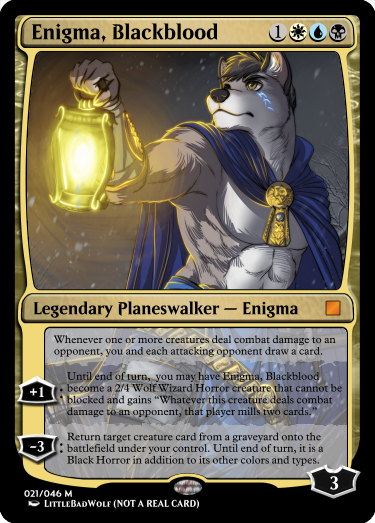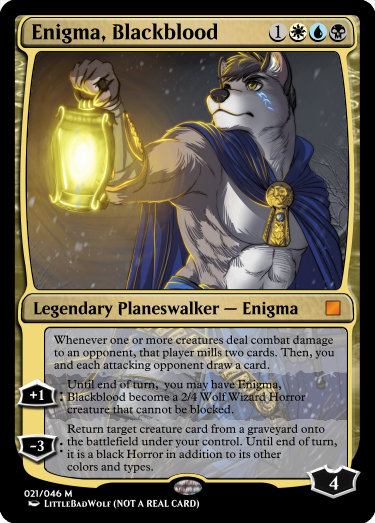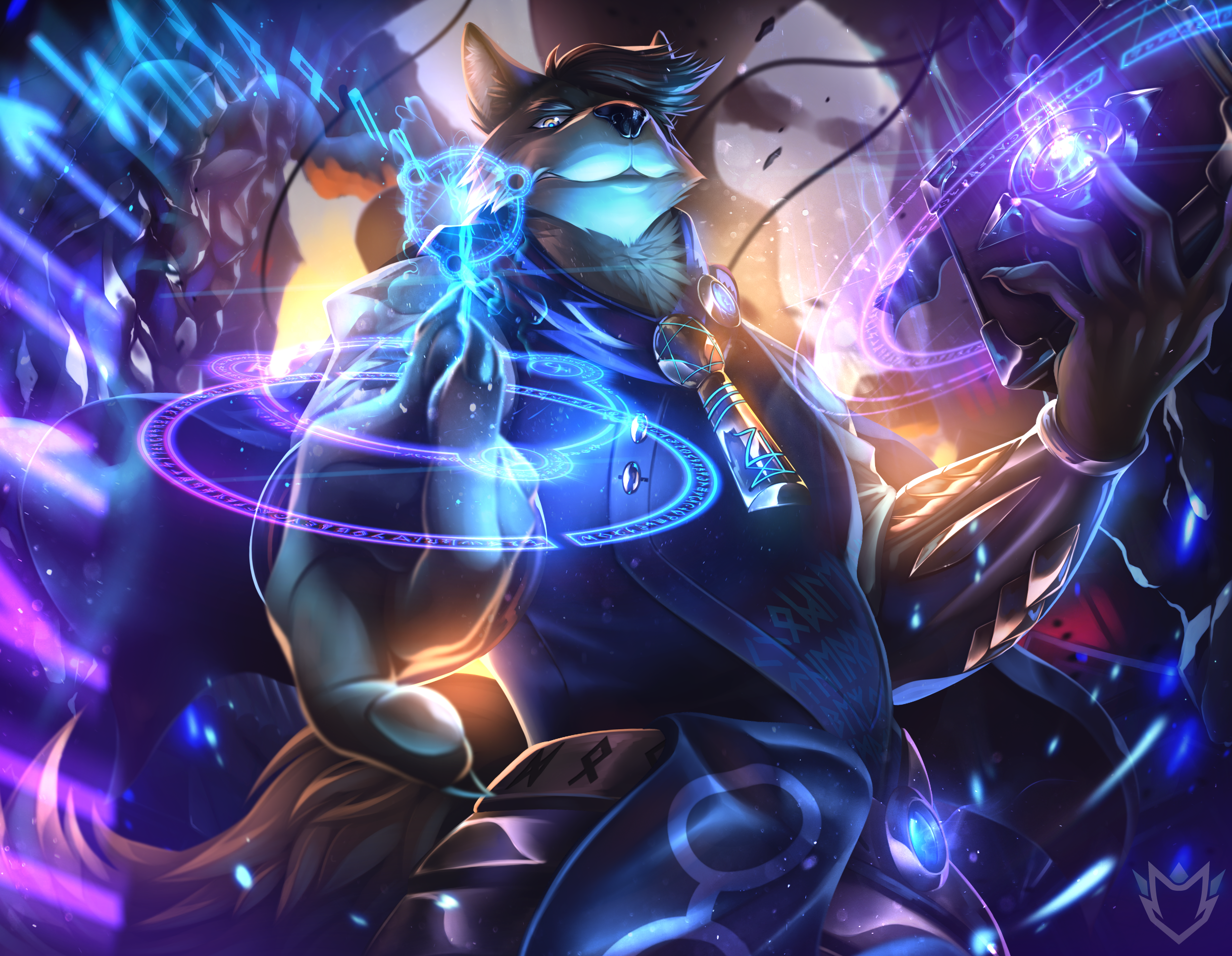
Enigma, Blackblood
This is the card that I used LittleBadWolf’s art for. The idea was to mechanically represent the symbiote-enhanced Enigma. Though there was one more iteration of the card before this one.

As you might be able to tell from the wording of the passive, this is card focused around multiplayer games, and specifically Commander. Enigma is a master manipulator, and used that talent effectively on the battlefield to coerce his opponents into taking care of each other for him. Perhaps if they get cards, they’ll be persuaded to direct their aggression elsewhere (ignoring the fact that he will also draw cards).
Additionally, they’ll be milling cards to the graveyard, which is perfect because Enigma can use his symbiote to resurrect them. If you were wondering why they flavorfully become a horror for the turn, it’s because the symbiote is working on healing their body before it leaves them standing as they were.
Combined these two effects lend themselves to a strategy of milling our opponents by poking them with creatures that are hard to block, and then reanimating whatever strong creatures hit their graveyards.
And though the deck was fun, I underestimated just how much my playgroup despises mill, and being incidentally milled by other players attacking them. As a compromise, I moved the mill effect to Enigma himself when he becomes to creature with his +1. That said, I’m likely going to revert that change at some point and go back to my old design. If I do anything else, it will be to remove the “Black Horror” clause on the -3 to reduce the overall word count.
That said, they also told me that it didn’t feel right that Enigma could stay on the board after resurrecting a creature on the turn he was played. I’m more sympathetic to that argument, but then perhaps it is better he doesn’t die immediately so that he has to build up to doing it again.
In general, with War of the Spark normalizing passives on planeswalkers, and planeswalkers that don’t have “ultimates” on them, I’ve found myself much more interested in exploring the card type mechanically. This remains one of my favorite designs largely because I like designs that encourage and foster interaction with other players on the board, and it does a good job in forecasting the game plan so that other players can prepare for it.



No Comments
Sorry, the comment form is closed at this time.